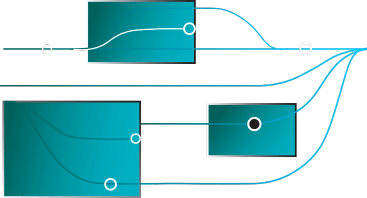Automated Testing with Azure DevOps: Step-by-Step Guide for Smarter CI/CD

In today’s release-driven software world, shipping fast is only half the battle, the real win comes when speed is paired with rock-solid quality. Many teams under relentless delivery schedules know the tension all too well: push out new features quickly, but make sure nothing breaks for the customer. Automated testing with Azure DevOps – one proven way to strike that balance is by embedding testing directly into the build pipeline.
With Azure DevOps, automated testing isn’t just an afterthought; it becomes part of the CI/CD. By integrating CI/CD automated tests in Azure DevOps. Whether you’re a DevOps engineer refining release workflow, a QA lead setting quality gates, or an SDET catching regressions before they spread, this approach helps you spot problems early and keep release cycles tight. In the pages ahead, we’ll explore not just the “how” but the “why,” looking at practical setup tips, key best practices for automated testing in Azure DevOps, and where advanced integrations, such as ACCELQ, can give your pipeline an edge.
- What Is Automated Testing in Azure DevOps?
- Why Automated Testing Matters for CI/CD Pipelines?
- Azure Test Plans Automated Testing – Centralized Quality Management
- Running CI/CD Automated Tests in Azure DevOps – Step-by-Step
- Best Practices for Automated Testing in Azure DevOps
- Visualizing Azure Pipelines Continuous Testing
- Integrate ACCELQ with Azure DevOps for Advanced Automation
- Conclusion
What Is Automated Testing in Azure DevOps?
Automated testing with Azure DevOps refers to running pre-scripted tests automatically as part of the build and release pipelines. These can be:
- Unit tests – Verify individual components for correctness.
- Integration tests – Ensure combined modules work as expected.
- UI tests – Simulate user actions to validate interface behavior.
The goal is simple: ensure that every change is validated consistently and quickly before it reaches end users.
Explore the different types of testing, when to use them, and how they fit into your CI/CD automation strategy in Azure DevOps.
📋 Read the Full Guide
Why Automated Testing Matters for CI/CD Pipelines?
In a Continuous Integration/Continuous Deployment (CI/CD) environment, frequent releases demand reliable quality checks. Azure DevOps, through Azure Pipelines continuous testing, allows teams to run tests during:
- Build stage (CI): Catch errors right after code commits.
- Release stage (CD): Validate functionality in staging or production-like environments.
Key benefits include:
Azure Test Plans Automated Testing – Centralized Quality Management
One of the most valuable features in Azure DevOps is Azure Test Plans’ automated testing. This tool centralizes both manual and automated testing, integrates with Azure Pipelines continuous testing, and offers:
- Organized test suites and plans.
- Linking tests to user stories or requirements.
- Tracking historical pass/fail trends.
- Combining exploratory testing with automated regression checks.
While Azure Test Plans excels at managing test workflows, it’s important to note that execution of automated tests is typically handled through pipelines, with results fed back into Test Plans for tracking and reporting.
Running CI/CD Automated Tests in Azure DevOps – Step-by-Step
Implementing Azure DevOps test automation involves:
1. Prepare the Testing Environment
- Install the appropriate framework (MSTest, NUnit, xUnit, PyTest, JUnit, etc.).
- Organize tests into separate projects within the repository.
- Configure mock services or stable datasets to avoid flaky results.
2. Create a Build Pipeline (YAML Example for .NET Core)
trigger: - main pool: vmImage: 'ubuntu-latest' Steps: - script: dotnet restore displayName: 'Restore Dependencies' - script: dotnet build --configuration Release displayName: 'Build Solution' - script: dotnet test --logger "trx;LogFileName=test_results.xml" displayName: 'Run Tests' - task: PublishTestResults@2 inputs: testResultsFormat: 'VSTest' testResultsFiles: '**/*.xml' failTaskOnFailedTests: true
3. Integrate Tests into Release Pipelines
- Add pre-deployment gates to run regression or integration tests.
- Include smoke tests after deployment to validate stability.
Best Practices for Automated Testing in Azure DevOps
Testing using Azure DevOps Test can be made more impactful with a systematic approach that encourages speed, with the right touch of accuracy and long term maintainability. Here are some of the important best practices:
- Shift Left Testing: Conduct tests as early in the development cycle as you can. When defects are caught during early phases, it minimizes the need for rework, saves up on cost, and expedites time to the market.
- Parallel Execution: Run test suites across different test agents simultaneously. This guarantees to execute tests in a short time, especially in large-scale regression testing.
- Keep Test Data Stable: Use controlled, static, and reusable test data for the tests to ensure consistent results. Test data management tools or synthetic data generation can aid in preserving stability.
- Ongoing Evaluation and Feedback: Ensure that trends in and patterns of failed tests are analysed regularly. Leverage dashboards and analytics available in Azure DevOps to monitor KPIs like pass rate, execution time, and defect leakage.
- Link Test to Work Items: Link your test cases with Azure Boards to trace a defect to a user story or requirement. This further improves visibility and allows a faster triage process.
- Incorporate CI/CD Pipelines: Integrate automated testing within CI/CD pipelines. Continuous validation, by running smoke tests on each commit and regression suites on nightly builds.
- Test Prioritization: Not every test needs to run with the same frequency. Focus on business workflows that are critical, and areas that are risk-prone to reduce execution time.
- Use Self-Healing Tests: Use self-healing automation powered by AI such that even a minute change in the UI or element will not break your test scripts and require minimal maintenance in the future.
- Version Control of Test Assets: Use source control (Git, etc.) for storing your test scripts, test data for data-driven tests and configurations, history tracking, and rollback if needed.
- Keep Optimizing the Test Suites: Regularly review and update the test suites to eliminate duplicate, old, or similar tests. This ensures test execution is sharp and efficient.
- Security and Compliance Testing: Expand automation to scan for security vulnerabilities and compliance, particularly for regulated industries, to avoid the emergence of gaps associated with such vulnerabilities.
- Utilize Cloud Test Environments: Scaling up test environments whenever needed is a highly recommended approach that can help avoid delays due to the unavailability of environments, and on-demand provisioning of the infrastructure can also be done quickly.
Visualizing Azure Pipelines Continuous Testing
A well-structured CI/CD flow helps teams see where CI/CD automated tests in Azure DevOps fit in:
[Code Commit]
↓
[Build Pipeline: Compile + Unit Tests]
↓
[Publish Test Results in Azure DevOps]
↓
[Release Pipeline: Integration + UI Tests]
↓
[Post-Deployment Validation]
↓
[Production Release]
Turning this into an infographic for your blog boosts engagement and SEO visibility for searches around Azure Pipelines continuous testing.
Integrate ACCELQ with Azure DevOps for Advanced Automation
For teams aiming to extend beyond native capabilities, integrate ACCELQ with Azure DevOps to unlock:
- No-Code Test Creation – Empower non-developers to create robust tests.
- Cross-Layer Coverage – Validate UI, API, and backend workflows in one platform.
- Native Pipeline Integration – Trigger ACCELQ tests from Azure Pipelines automatically.
- Unified Reporting – View results alongside native Azure DevOps test reports.
Integration Steps:
- Install the ACCELQ Azure DevOps plugin.
- Connect to your ACCELQ workspace.
- Map ACCELQ test suites to specific pipeline stages.
- Schedule or trigger tests on commits.
This combination enhances CI/CD quality control while reducing test maintenance costs.
Do more with Test Automation
Discover more ways to add ‘low-code no-code‘ test automation in your workflows

Conclusion
For teams aiming to move fast without compromising quality, automated testing in Azure DevOps is no longer optional, it’s essential. By combining Azure DevOps test automation with Azure Test Plans automated testing and Azure Pipelines continuous testing, delivery teams can release features with confidence and consistency.
Integrating ACCELQ into this workflow elevates CI/CD automation even further, adding scalability, easier maintenance, and broad cross-platform support. If you’re ready to streamline your release process, consider booking a free ACCELQ demo and see how intelligent, end-to-end automated testing in Azure DevOps can keep quality at the center of every deployment.
Prashanth Punnam
Sr. Technical Content Writer
With over 8 years of experience transforming complex technical concepts into engaging and accessible content. Skilled in creating high-impact articles, user manuals, whitepapers, and case studies, he builds brand authority and captivates diverse audiences while ensuring technical accuracy and clarity.
You Might Also Like:
 Low-Code Automation Platforms | The Game Changer
Low-Code Automation Platforms | The Game Changer
Low-Code Automation Platforms | The Game Changer
 Test Automation in 2023: Essential Dos and Don’ts for Success
Test Automation in 2023: Essential Dos and Don’ts for Success
Test Automation in 2023: Essential Dos and Don’ts for Success
 ACCELQ Product Overview
ACCELQ Product Overview
































